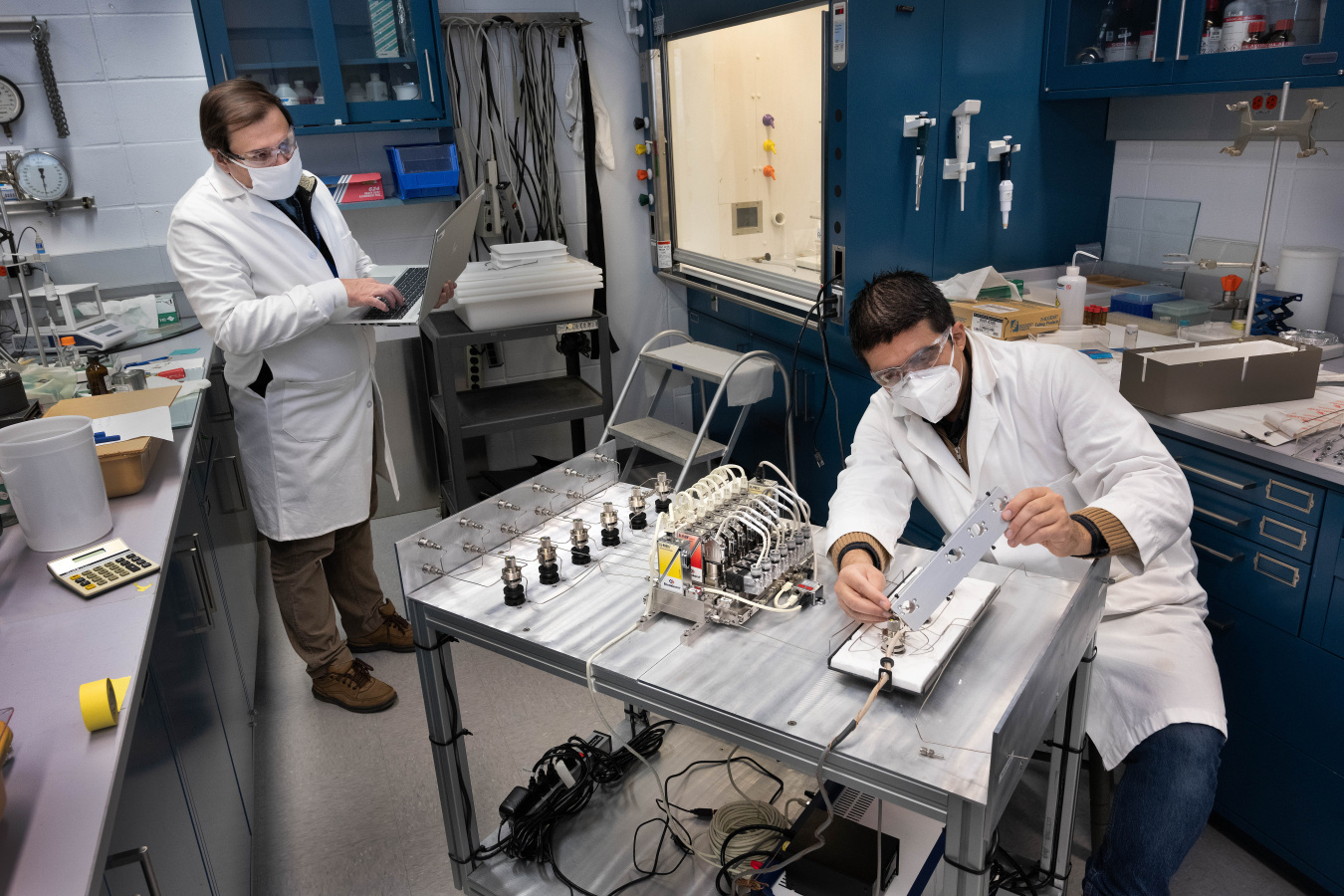
Catalysts—chemicals that reduce the energy needed to make a chemical reaction take place—are vital to an astonishing range of industrial processes, including the removal of carbon dioxide and other pollutants from industrial exhaust streams. They are used everywhere across industry.
From the time he joined Brookhaven National Laboratory in 1990, José Rodriguez was fascinated by the complex problem of how catalysts actually work.
“To understand how a catalyst works, you need to see what happens at its active sites during chemical transformations,” he said. “This is a very complex thing. You need a lot of tools to see how the catalyst changes over time, especially under harsh environmental conditions like high pressures and temperatures.”
Among the most powerful tools for studying catalysts are synchrotron light sources—which use powerful X-rays to peer into microscopic depths and can observe chemical reactions as they occur. Rodriguez’s work focused on the use of Brookhaven’s National Synchrotron Light (NSLS) Source to study catalysts in action.
“My team and I used NSLS to study catalysts in very controlled environments. We created these environments by putting the catalysts in specialized ultra-high vacuum chambers originally developed by NASA in the 1960s. After setting the inside of the chambers to the conditions we wanted, we put them in the synchrotron. The hard and soft X-rays from the synchrotron made it possible to study the structural, electronic, and chemical properties of the catalytic material as well as how those changed during the reaction process.”
Rodriguez’s Distinguished Scientist Fellows project, titled, “New Tools for Mechanistic Transient Studies in Catalysis Science,” will make use of NSLS-II, the powerful successor to NSLS, for time-resolved studies of catalysts in action. Particular focus is on catalytic processes linked to the production of clean fuels or the removal of atmospheric pollutants, such as carbon dioxide or methane. In the last six months, he and a new postdoctoral associate, Jorge Moncada, have focused their activities on setting up new instrumentation at the Chemistry Division of Brookhaven National Laboratory that will be tested in the coming months and transferred to beamlines of the NSLS-II in the second half of 2021. Rodriguez shows exceptional enthusiasm and commitment for mentoring a diverse, next generation of scientists. Moncada is only the most recent of more than a score of postdoctoral associates whom Rodriguez has mentored during his years at Brookhaven, many of whom are from under-represented groups in STEM research and have remained active in the field of catalysis science. The impacts of Rodriguez’s commitment to mentoring and diversity can also be seen through his mentorship of summer undergraduate interns from underserved communities at Brookhaven and graduate students at Stony Brook University, where he holds an adjunct appointment.
Eventually, the unique instrumentation developed in the course of Rodriguez’s fellowship will be available to catalysis researchers through the Synchrotron Catalysis Consortium and the user program of the NSLS II. And so his award will have resulted in a permanent contribution, in the form of powerful new instrumentation, to the catalysis community.
NSLS-II is a DOE Office of Science user facility.

